The first .com
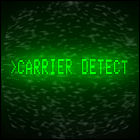 Massachusetts computer manufacturer Symbolics Inc., a maker of LISP-based computers with customers ranging from the Defense Advanced Research Projects Agency (DARPA) to movie studios, registers the first .com internet domain name, symbolics.com. Ironically, despite being further ahead of the internet curve than nearly any other commercial entity, Symbolics struggles to last into the 1990s; both the company’s assets and its domain name will be sold off in the 21st century.
Massachusetts computer manufacturer Symbolics Inc., a maker of LISP-based computers with customers ranging from the Defense Advanced Research Projects Agency (DARPA) to movie studios, registers the first .com internet domain name, symbolics.com. Ironically, despite being further ahead of the internet curve than nearly any other commercial entity, Symbolics struggles to last into the 1990s; both the company’s assets and its domain name will be sold off in the 21st century.

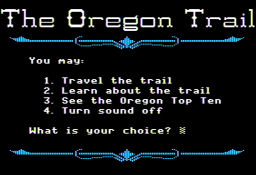 The Minnesota Educational Computing Corporation releases
The Minnesota Educational Computing Corporation releases 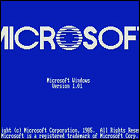 Microsoft introduces a graphical user interface for the IBM PC compatible computers, Windows 1.0. Essentially a GUI shell for Microsoft’s MS-DOS operating system, Windows arrives over two years after it was initially announced in 1983. To avoid legal entanglements with Apple (which has already launched a more visually-pleasing user interface with its Macintosh computers), Microsoft deliberately omits such now common features as overlapping or resizeable windows. Due to the amount of RAM in most users’ PCs, Windows’ multitasking ability is extremely limited.
Microsoft introduces a graphical user interface for the IBM PC compatible computers, Windows 1.0. Essentially a GUI shell for Microsoft’s MS-DOS operating system, Windows arrives over two years after it was initially announced in 1983. To avoid legal entanglements with Apple (which has already launched a more visually-pleasing user interface with its Macintosh computers), Microsoft deliberately omits such now common features as overlapping or resizeable windows. Due to the amount of RAM in most users’ PCs, Windows’ multitasking ability is extremely limited.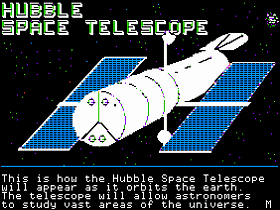 NASA releases
NASA releases  The World Wide Web is born as Tim Berners-Lee shows off his concept for implementing hypertext, consisting of cross-linked documents, on the internet. At the time of his demonstration, the net’s primary functions are Gopher, Telnet and Usenet, but as those services do not provide a simple, user-friendly experience for providing amusingly captioned cat pictures to the public, “the web”, also known as “the WWW”, quickly gains traction and prominence. While the internet’s infrastructure can trace its origins to the 1960s and ARPAnet, this marks the dawn of the public-facing internet (which now, of course, includes the site you are reading right now).
The World Wide Web is born as Tim Berners-Lee shows off his concept for implementing hypertext, consisting of cross-linked documents, on the internet. At the time of his demonstration, the net’s primary functions are Gopher, Telnet and Usenet, but as those services do not provide a simple, user-friendly experience for providing amusingly captioned cat pictures to the public, “the web”, also known as “the WWW”, quickly gains traction and prominence. While the internet’s infrastructure can trace its origins to the 1960s and ARPAnet, this marks the dawn of the public-facing internet (which now, of course, includes the site you are reading right now). Previously distributed between computer bulletin board systems and FidoNet BBS nodes as a series of text files, theLogBook makes its debut on the world wide web, on a slice of web space borrowed from the University of Arkansas. In most cases, the episode guides previously distributed via BBS are simply the text files posted on the web, though conversion into HTML documents gradually takes place. The gigantic full-screen graphical menu overwhelms many a dial-up web surfer and is quickly replaced with a simpler, text-based menu.
Previously distributed between computer bulletin board systems and FidoNet BBS nodes as a series of text files, theLogBook makes its debut on the world wide web, on a slice of web space borrowed from the University of Arkansas. In most cases, the episode guides previously distributed via BBS are simply the text files posted on the web, though conversion into HTML documents gradually takes place. The gigantic full-screen graphical menu overwhelms many a dial-up web surfer and is quickly replaced with a simpler, text-based menu. Programmer Nicola Salmoria releases the earliest version of the Multiple Arcade Machine Emulator, or MAME, a freeware PC program which allows users to obtain dumps of the original 1970s and 1980s arcade game ROM chips which MAME interprets, emulating the original hardware architecture to allow play of those games with remarkable fidelity to the original graphics and sounds. This kick-starts a golden age of computer emulation of classic video games and game systems, with the average desktop computer now sporting enough memory to allow for accurate emulation. The release of MAME also ignites an ongoing controversy about the legality of downloading games whose original manufacturers are no longer exploting their intellectual property (or, in some cases, no longer exist as corporate entities).
Programmer Nicola Salmoria releases the earliest version of the Multiple Arcade Machine Emulator, or MAME, a freeware PC program which allows users to obtain dumps of the original 1970s and 1980s arcade game ROM chips which MAME interprets, emulating the original hardware architecture to allow play of those games with remarkable fidelity to the original graphics and sounds. This kick-starts a golden age of computer emulation of classic video games and game systems, with the average desktop computer now sporting enough memory to allow for accurate emulation. The release of MAME also ignites an ongoing controversy about the legality of downloading games whose original manufacturers are no longer exploting their intellectual property (or, in some cases, no longer exist as corporate entities).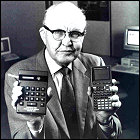 Computer pioneer Jack Kilby, a Nobel Prize winner for his part in creating the integrated cicruit, dies of cancer at the age of 81. A long-time employee of Texas Instruments, he co-invented the integrated circuit, which made the current advances in miniturization of computer technology possible. (Prior to that, even minimal computing power often occupied an entire room.) He also counted the handheld calculator among his inventions. Though he retired from TI in the early 80s, he continued to consult for the company until the time of his death.
Computer pioneer Jack Kilby, a Nobel Prize winner for his part in creating the integrated cicruit, dies of cancer at the age of 81. A long-time employee of Texas Instruments, he co-invented the integrated circuit, which made the current advances in miniturization of computer technology possible. (Prior to that, even minimal computing power often occupied an entire room.) He also counted the handheld calculator among his inventions. Though he retired from TI in the early 80s, he continued to consult for the company until the time of his death. The creator and programmer of Lode Runner, Douglas E. Smith, dies at the age of 53. A spare-time creation that became an all-consuming passion for Smith, Lode Runner sparked a nearly unprecedented bidding war among major computer game publishers in 1983. At the time of Smith’s death, Lode Runner has been ported to most major game and computer systems over the past 31 years.
The creator and programmer of Lode Runner, Douglas E. Smith, dies at the age of 53. A spare-time creation that became an all-consuming passion for Smith, Lode Runner sparked a nearly unprecedented bidding war among major computer game publishers in 1983. At the time of Smith’s death, Lode Runner has been ported to most major game and computer systems over the past 31 years.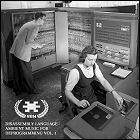 Chiptune music duo
Chiptune music duo 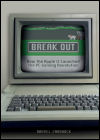 Schiffer publishes David L. Craddock’s non-fictional collection of essays on the stories and creators behind Apple II computer games, “
Schiffer publishes David L. Craddock’s non-fictional collection of essays on the stories and creators behind Apple II computer games, “ The chief designer of the 6502 microprocessor (a device credited with breaking Intel’s near-monopoly on the market and kick-starting the personal computer revolution), Chuck Peddle dies at the age of 82. Having already gained experience as part of the team that developed Motorola’s 6800 chip, Peddle realized that there was a need for a cheaper alternative. (At over $300 upon its introduction in 1973, the 6800 was still prohibitively expensive.) Motorola showed no interested in developing an inexpensive alternative, so Peddle defected to rival chip maker MOS, where he brought the 6502 chip to market. Within a few years of its introduction, the 6502 was already the heart of the
The chief designer of the 6502 microprocessor (a device credited with breaking Intel’s near-monopoly on the market and kick-starting the personal computer revolution), Chuck Peddle dies at the age of 82. Having already gained experience as part of the team that developed Motorola’s 6800 chip, Peddle realized that there was a need for a cheaper alternative. (At over $300 upon its introduction in 1973, the 6800 was still prohibitively expensive.) Motorola showed no interested in developing an inexpensive alternative, so Peddle defected to rival chip maker MOS, where he brought the 6502 chip to market. Within a few years of its introduction, the 6502 was already the heart of the  Santa Monica Press publishes Warren Davis’ career memoir, “
Santa Monica Press publishes Warren Davis’ career memoir, “